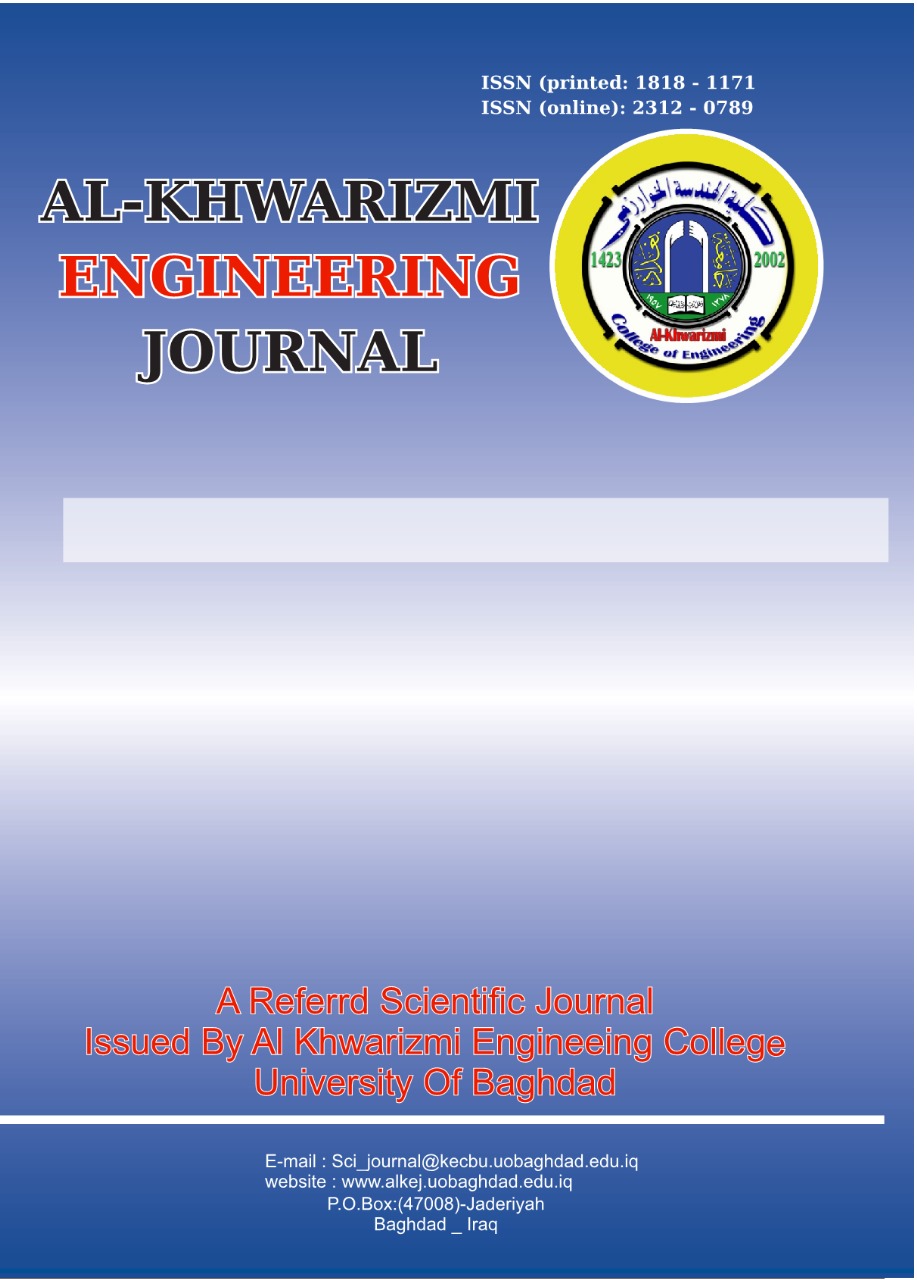Comparative Study between Activated Carbon and Charcoal for the Development of Latent Fingerprints on Nonporous Surfaces
DOI:
https://doi.org/10.22153/kej.2022.09.001Abstract
For criminal investigations, fingerprints remain the most reliable form of personal identification despite developments in other fields like DNA profiling. The objective of this work is to compare the performance of both commercial charcoal and activated carbon powder derived from the Alhagi plant to reveal latent fingerprints from different non-porous surfaces (cardboard, plain glass, aluminum foil sheet, China Dish, Plastic, and Switch). The effect of three variables on activated carbon production was investigated. These variables were the impregnation ratio (the weight ratio of KOH: dried raw material), the activation temperature, and the activation time. The effect factors were investigated using Central Composite Design (CCD) software. The optimum activation conditions were found as an impregnation ratio of 1:2.6, activated time of 160 min, and temperature of 630oC. The results of the comparison show that Alhagi active carbon powder (AAC) has a high ability to develop latent fingerprints on all surfaces except on plastic surfaces while the commercial charcoal failed to develop the latent fingerprint on both plastic and aluminum foil sheets surfaces. AAC was found to clearly show every feature of the latent fingerprints more than commercial charcoal for both males and females. Also, AAC has the ability to show latent fingerprints till 15 days while commercial charcoal has the ability to show latent fingerprints just till 7 days.
Downloads
References
detecting latent fingerprints: A review,” Forensic Sci. Int., vol. 120, no. 3, pp. 172–176, 2001, doi: 10.1016/S0379-0738(00)00465-5.
S. D. Salman, “Adsorption of Heavy Metals from Aqueous Solution onto Sawdust Activated Carbon,” vol. 15, no. 3, pp. 60–69, 2019.
R. Krishnamoorthy, B. Govindan, F. Banat, V. Sagadevan, M. Purushothaman, and P. L. Show, “Date pits activated carbon for divalent lead ions removal,” J. Biosci. Bioeng., vol. 128, no. 1, pp. 88–97, 2019, doi: 10.1016/j.jbiosc.2018.12.011.
S. Maulina and M. Iriansyah, “Characteristics of activated carbon resulted from pyrolysis of the oil palm fronds powder,” IOP Conf. Ser. Mater. Sci. Eng., vol. 309, no. 1, pp. 0–6, 2018, doi: 10.1088/1757-899X/309/1/012072.
B. Sadhukhan, N. K. Mondal, and S. Chattoraj, “Optimisation using central composite design (CCD) and the desirability function for sorption of methylene blue from aqueous solution onto Lemna major,” Karbala Int. J. Mod. Sci., vol. 2, no. 3, pp. 145–155, 2016, doi: 10.1016/j.kijoms.2016.03.005.
A. E. Sarrai et al., “Using central composite experimental design to optimize the degradation of Tylosin from aqueous solution by Photo-Fenton reaction,” Materials (Basel)., vol. 9, no. 6, 2016, doi: 10.3390/ma9060428.
S. Chattoraj, B. Sadhukhan, and N. K. Mondal, “Predictability by Box-Behnken model for carbaryl adsorption by soils of Indian origin,” J. Environ. Sci. Heal. - Part B Pestic. Food Contam. Agric. Wastes, vol. 48, no. 8, pp. 626–636, 2013, doi: 10.1080/03601234.2013.777283.
T. Budinova et al., “Characterization and application of activated carbon produced by H3PO4 and water vapor activation,” Fuel Process. Technol., vol. 87, no. 10, pp. 899–905, 2006, doi: 10.1016/j.fuproc.2006.06.005.
S. Lecturer and S. Dawood, “Removal of Organic Micro Pollutants by Adsorption on Activated Carbon Prepared from Alhagi ( Maurorun ),” 2019.
S. Li, K. Han, J. Li, M. Li, and C. Lu, “Preparation and characterization of super activated carbon produced from gulfweed by KOH activation,” Microporous Mesoporous Mater., vol. 243, pp. 291–300, 2017, doi: 10.1016/j.micromeso.2017.02.052.
M. Waleed Khalid and S. D. Salman, “Adsorption of Chromium Ions on Activated Carbon Produced from Cow Bones,” Iraqi J. Chem. Pet. Eng., vol. 20, no. 2, pp. 23–32, 2019, doi: 10.31699/ijcpe.2019.2.4.
Downloads
Published
Issue
Section
License
Copyright: Open Access authors retain the copyrights of their papers, and all open access articles are distributed under the terms of the Creative Commons Attribution License, which permits unrestricted use, distribution, and reproduction in any medium, provided that the original work is properly cited. The use of general descriptive names, trade names, trademarks, and so forth in this publication, even if not specifically identified, does not imply that these names are not protected by the relevant laws and regulations. While the advice and information in this journal are believed to be true and accurate on the date of its going to press, neither the authors, the editors, nor the publisher can accept any legal responsibility for any errors or omissions that may be made. The publisher makes no warranty, express or implied, with respect to the material contained herein.
















